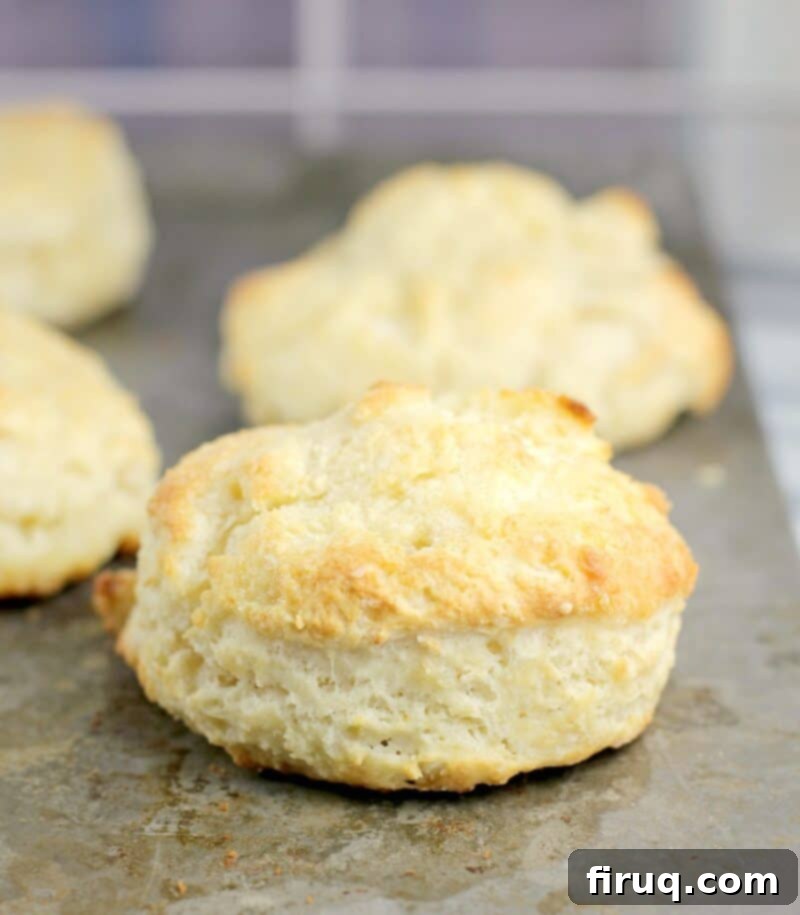Fluffy & Flaky Southern Buttermilk Biscuits: Your Guide to Homemade Perfection
There’s nothing quite like waking up to the irresistible aroma of freshly baked, homemade Southern Buttermilk Biscuits. These culinary treasures are the epitome of comfort food, renowned for their heavenly fluffiness, delicate flakiness, and rich, buttery flavor. A staple of Southern cuisine, these biscuits are more than just a breakfast item; they’re a warm hug on a plate, a taste of tradition that brings families together around the breakfast table.
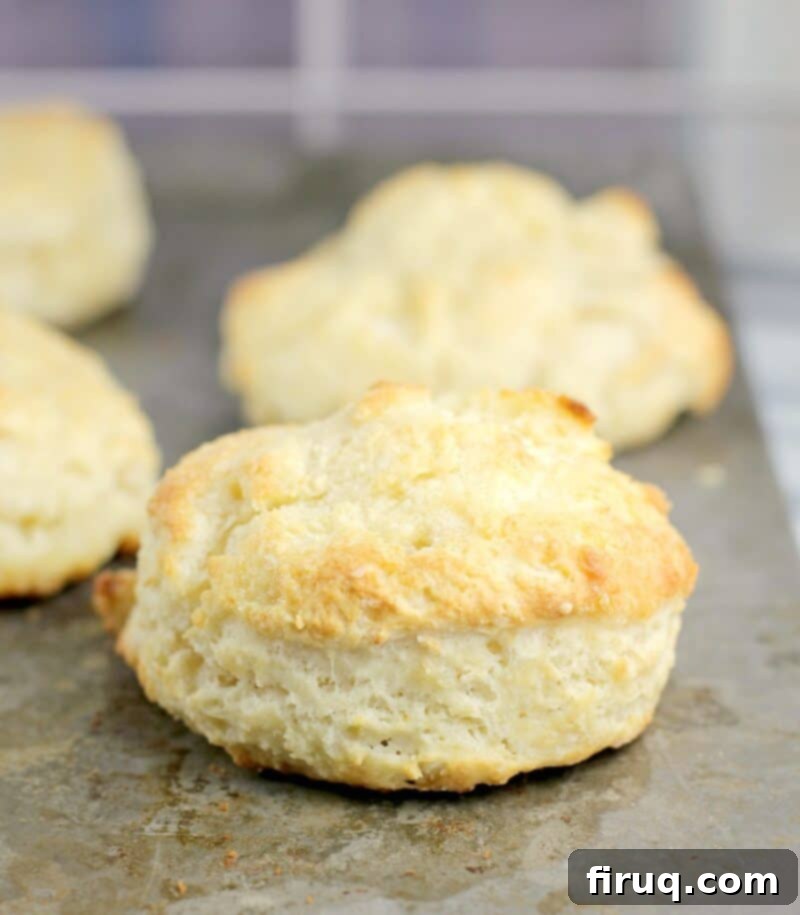
For many, the allure of a perfect biscuit is simply undeniable. Whether it’s a special occasion or just a regular weekend morning, the promise of a warm, tender biscuit is enough to make anyone forget their diet or any other pressing concerns. And when those biscuits are made from scratch, the experience is elevated to an entirely new level. I still fondly recall my time living in Texas, where a close family would effortlessly whip up a batch of these golden delights almost every weekend for breakfast. It was a cherished ritual, much like my grandmother’s biscuit-making tradition back in North Carolina during my childhood. Biscuits were simply a given for breakfast, a comforting presence that signaled the start of a wonderful day.
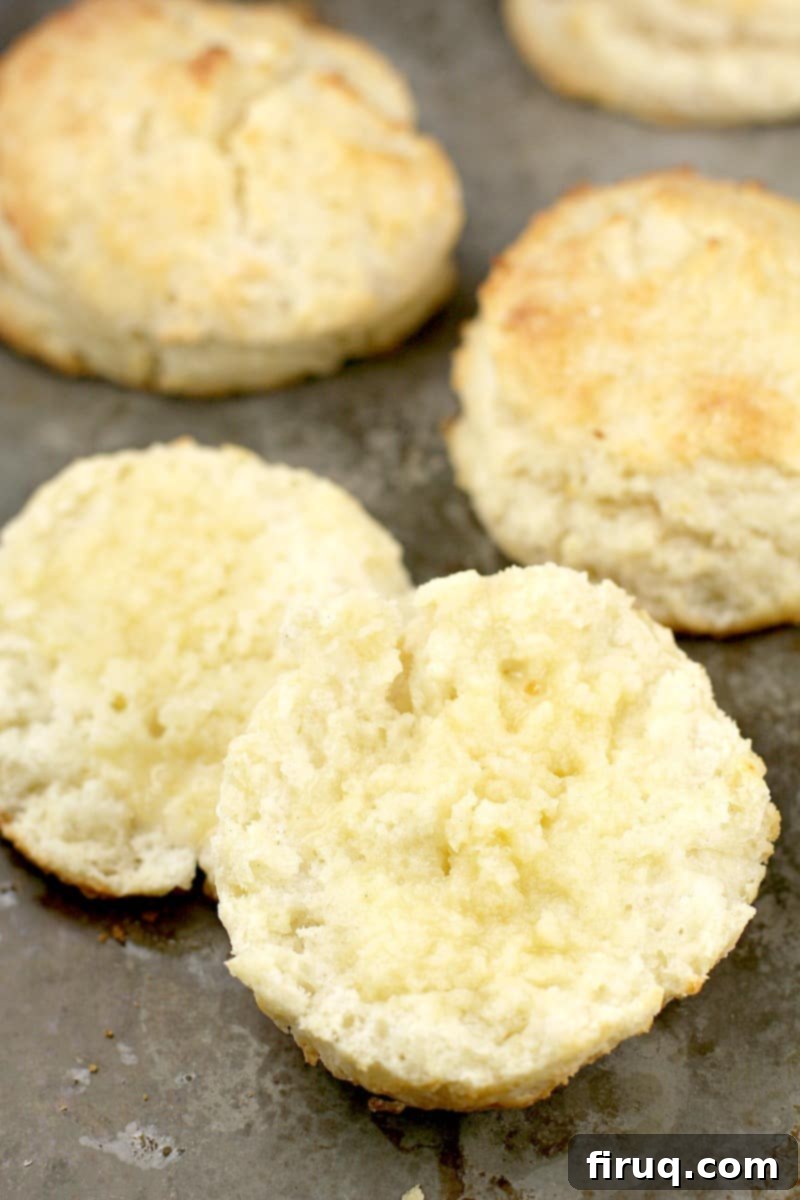
Understanding American Biscuits: A Culinary Distinction
Before diving into the recipe, it’s essential to clarify what we mean by “biscuits” in an American context, especially the beloved Southern variety. In the United States, a biscuit refers to a small, savory, leavened bread, typically made with flour, butter or shortening, and buttermilk, and often served with breakfast. They are tender, often flaky, and rise beautifully in the oven thanks to baking powder or baking soda acting as leavening agents.
This definition stands in stark contrast to what the word “biscuit” means in many other English-speaking countries, such as the UK, Ireland, Australia, and parts of Europe. In those regions, a “biscuit” is generally akin to what Americans call a “cookie” – a small, flat, often crisp, and usually sweet baked confection. This linguistic and culinary difference can sometimes lead to delightful confusion, but it highlights the unique place that the American biscuit holds in its native cuisine. Here in America, especially in the South, biscuits are hearty, flour-based buns of love, perfect for soaking up gravy, spreading with butter and jam, or serving alongside fried chicken.
The beauty of Southern Buttermilk Biscuits lies not just in their taste but also in their incredible versatility. While most commonly associated with breakfast, they can be enjoyed throughout the day. Picture them as the foundation for a breakfast sandwich with eggs and sausage, as a side for a hearty stew, or even split open and topped with fresh fruit and whipped cream for a simple dessert. Their mild, savory flavor makes them a perfect canvas for a wide array of toppings and accompaniments.
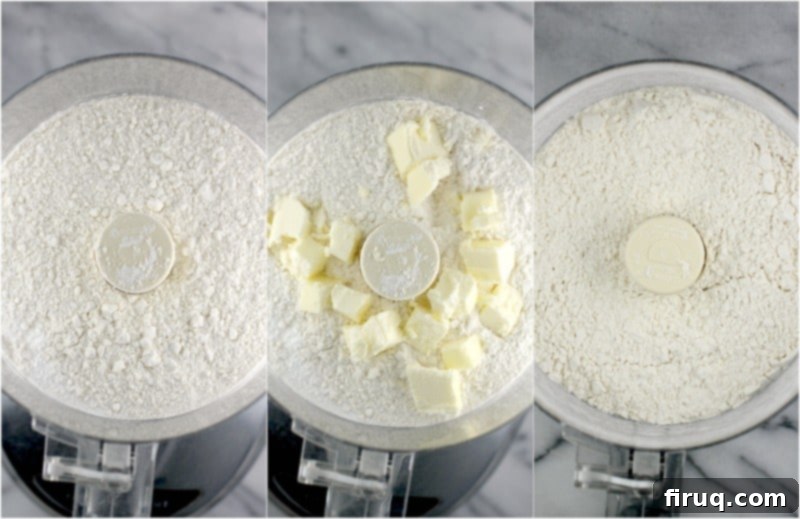
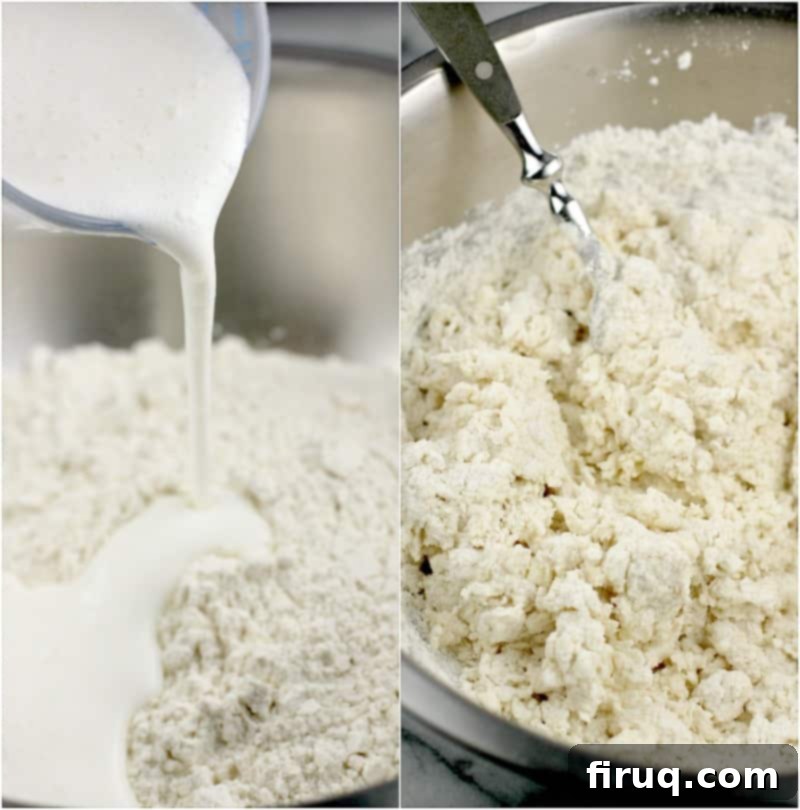
Simple Ingredients for Extraordinary Taste
The magic of Southern Buttermilk Biscuits comes from a surprisingly short and simple list of pantry staples. You don’t need exotic ingredients to create something truly delicious and comforting. The quality of these basic components, however, makes all the difference in the final product.
- **All-purpose flour:** The foundation of our biscuits, providing structure.
- **Buttermilk:** Crucial for both flavor and its reaction with baking powder for leavening.
- **Baking powder:** The primary leavening agent that gives biscuits their rise.
- **Butter:** The secret to incredible flavor and that coveted flaky texture.
- **Salt:** Enhances all the flavors and balances the richness.
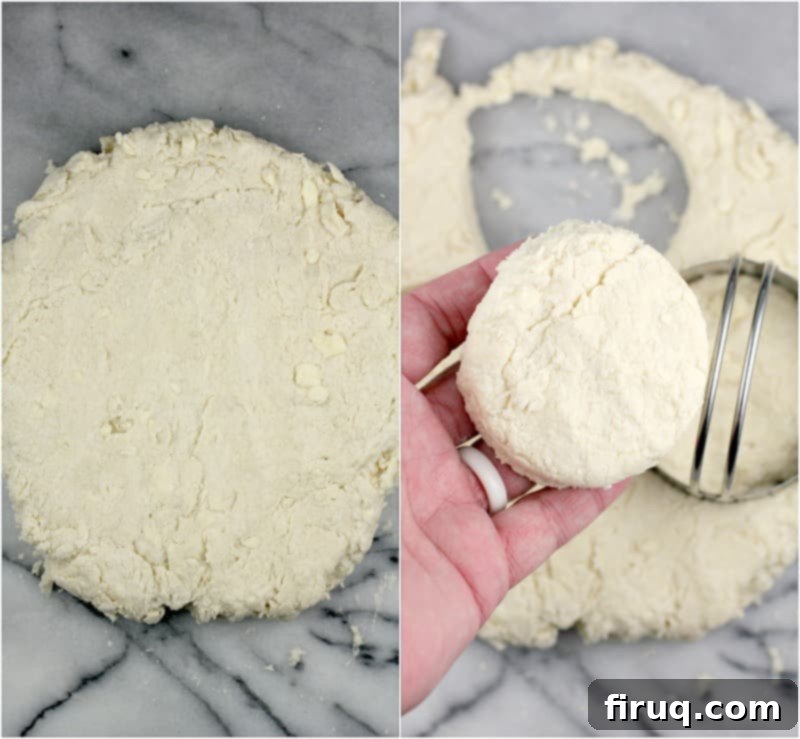
Unlocking the Secrets to Fluffy and Flaky Biscuits
Achieving those highly desired characteristics of flakiness and fluffiness in your buttermilk biscuits isn’t rocket science, but it does rely on understanding a few key scientific principles and techniques. The interplay between the flour, cold butter, buttermilk, and baking powder is what creates that perfect texture.
The Power of Cold Butter for Flakiness
The first secret to flaky biscuits lies in the butter, specifically its temperature. We use unsalted sweet cream butter, and it must be kept *very cold*. When tiny pieces of cold butter are incorporated into the flour and then baked in a hot oven, the moisture in the butter rapidly turns to steam. This steam creates small pockets and layers within the dough, separating the flour layers and resulting in those beautiful, distinct flakes that are the hallmark of a great Southern biscuit. This is the same principle applied to creating flaky pie crusts or puff pastry.
To ensure your butter stays cold, work quickly. A food processor is an excellent tool for this, as it rapidly cuts the butter into the flour without introducing too much heat from your hands. Pulse the dry ingredients and diced cold butter until the mixture resembles coarse crumbs, with some pea-sized pieces of butter still visible. If you don’t have a food processor, a pastry cutter or even two knives can achieve a similar result, though it requires a bit more effort and speed.
The Magic of Buttermilk and Baking Powder for Fluffiness
The second secret to a perfectly fluffy biscuit is the dynamic duo of buttermilk and baking powder. Baking powder is a chemical leavening agent, and when it comes into contact with the acid present in buttermilk, a chemical reaction occurs. This reaction produces carbon dioxide gas, which gets trapped within the dough. As the biscuits bake in the hot oven, these gas pockets expand, causing the dough to rise dramatically and creating a light, airy, and fluffy interior. Using full-fat buttermilk is recommended for the best flavor and tenderness. If you don’t have buttermilk on hand, you can create a simple substitute by adding one tablespoon of lemon juice or white vinegar to a liquid measuring cup, then filling the rest of the cup with regular milk to the desired amount (e.g., 1 cup total). Let it sit for 5-10 minutes until it slightly curdles before using.
Gentle Handling for Tender Biscuits
Perhaps the most crucial, yet often overlooked, secret is to handle the dough as little as possible. Overworking biscuit dough develops the gluten in the flour, which can lead to tough, dense biscuits instead of light and tender ones. Mix the buttermilk into the dry ingredients only until they are just combined and moistened. The dough should still look a little shaggy and not perfectly smooth. When forming and cutting the biscuits, work efficiently and with a light touch. This gentle approach ensures that the gluten remains relaxed, allowing for maximum rise and a wonderfully tender crumb.
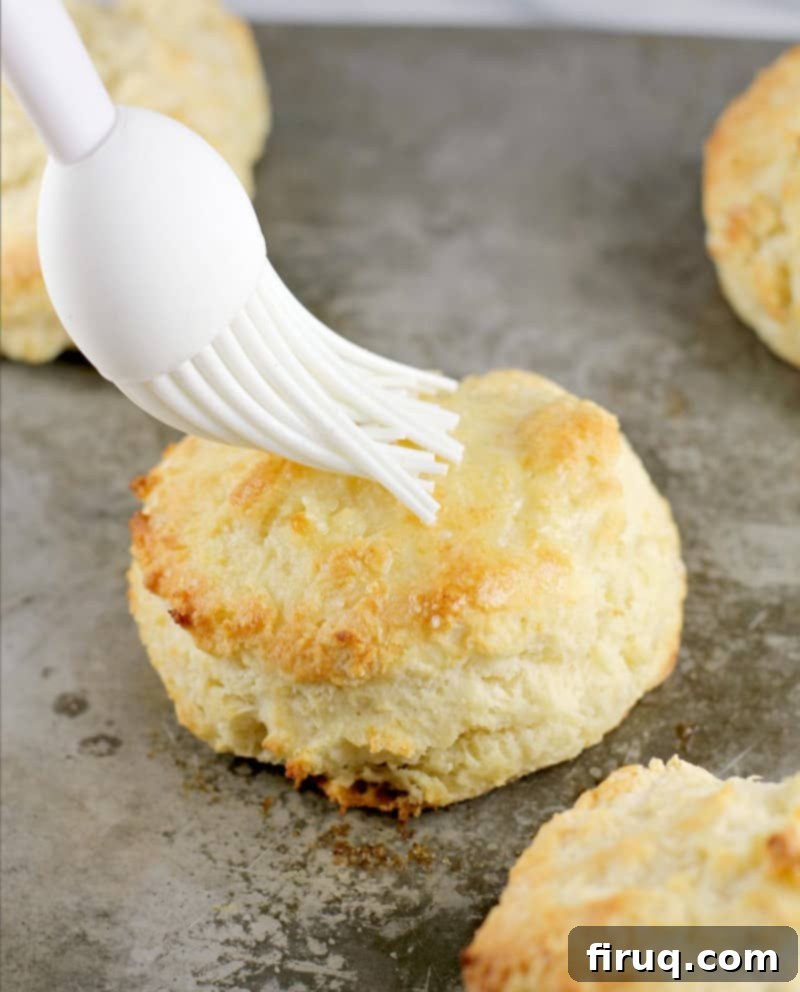
Easy Steps to Your Best Biscuits
Making these classic Southern buttermilk biscuits is a surprisingly quick process, designed to minimize handling and keep that crucial butter cold. From start to finish, you can have warm, buttery delights on your table in under 30 minutes, with active prep time being even less.
- **Prepare the dry ingredients and butter:** In a food processor, pulse together the flour, baking powder, salt, and diced cold butter. This step should be done quickly until the mixture resembles coarse crumbs with some larger pea-sized butter pieces. This rapid method prevents the butter from warming up.
- **Stir in the buttermilk:** Add the buttermilk to the flour mixture. Using a fork, gently stir just until the flour is moistened and the dough barely comes together. Avoid overmixing; a slightly shaggy dough is perfectly fine and desired. If the dough seems too dry, add a tiny bit more buttermilk, a tablespoon at a time, until it just holds together.
- **Form and bake:** Turn the dough out onto a lightly floured surface. Gently pat or roll the dough to your desired thickness (typically around ¾-inch). Using a biscuit cutter, cut out rounds and place them on a baking sheet. Immediately transfer them to a preheated oven to ensure the butter remains cold and helps create those flaky layers.
The beauty of this recipe is its efficiency. In about 10-15 minutes of baking, you’ll be pulling buttery, flaky, and delicious buttermilk biscuits from your oven, ready to enjoy.
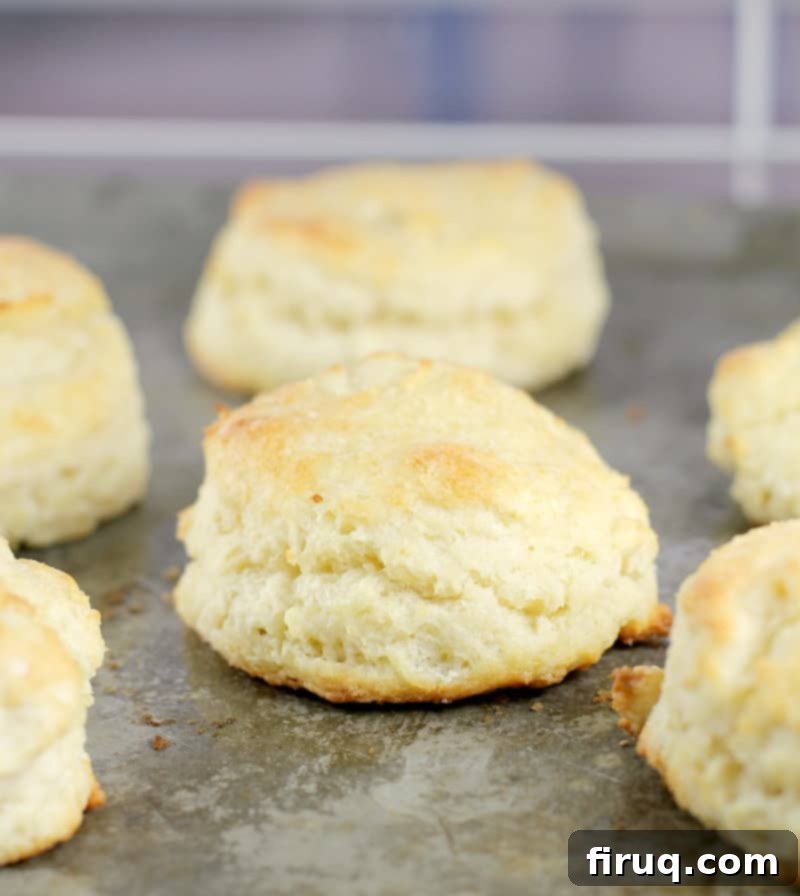
Expert Tips for Biscuit Success
To ensure every batch of your Southern Buttermilk Biscuits turns out perfectly, keep these expert tips in mind:
- **Kitchen Tools:** While a food processor is the quickest and easiest way to incorporate cold butter into the flour without warming it, a good old-fashioned pastry cutter works just as well. Just be sure to work quickly and efficiently.
- **Size Matters (But Not Really!):** This recipe is incredibly versatile. You can make smaller, bite-sized biscuits or larger, more substantial ones. The key is to adjust your baking time accordingly. Smaller biscuits will cook faster, while larger ones will need a few extra minutes. They’re done when they are beautifully golden brown on top and around the edges.
- **Time is of the Essence:** The fluffy texture comes from the buttermilk reacting with the baking powder, and the flakiness from the cold butter creating steam. To maximize these effects, once your dough is formed and cut, get those biscuits into the hot oven straight away. Don’t let the dough sit around at room temperature.
- **The “No Twist” Rule for Cutting:** When using a biscuit cutter (which is preferable to a drinking glass with dull edges), push straight down through the dough without twisting. Twisting the cutter can seal the edges of the biscuit, preventing it from rising properly and creating those desired flaky layers. The same applies to glasses; their rounded edges can inadvertently seal the dough.
- **Optimizing Yield:** After cutting your first batch of biscuits, gently gather the dough scraps, press them together (again, avoid overworking!), and cut out a few more. These “re-rolled” biscuits might not be as perfectly flaky as the first batch but will still be delicious.
- **Storage and Reheating:** Since homemade biscuits contain no preservatives, they are best enjoyed fresh, ideally on the day they are baked. Store any leftovers in a resealable bag or airtight container at room temperature for up to 1-2 days. To reheat, warm them in a moderate oven (around 300-350°F or 150-175°C) for 5-10 minutes, or until warmed through. This helps them regain some of their original tenderness and crispness.
- **Flavor Variations:** Don’t be afraid to experiment! For a savory twist, try adding shredded cheddar cheese and a pinch of cayenne pepper to the dry ingredients. Or, for an herby note, mix in some chopped fresh chives or rosemary. After baking, brush with a mixture of melted butter and honey for a touch of sweetness.
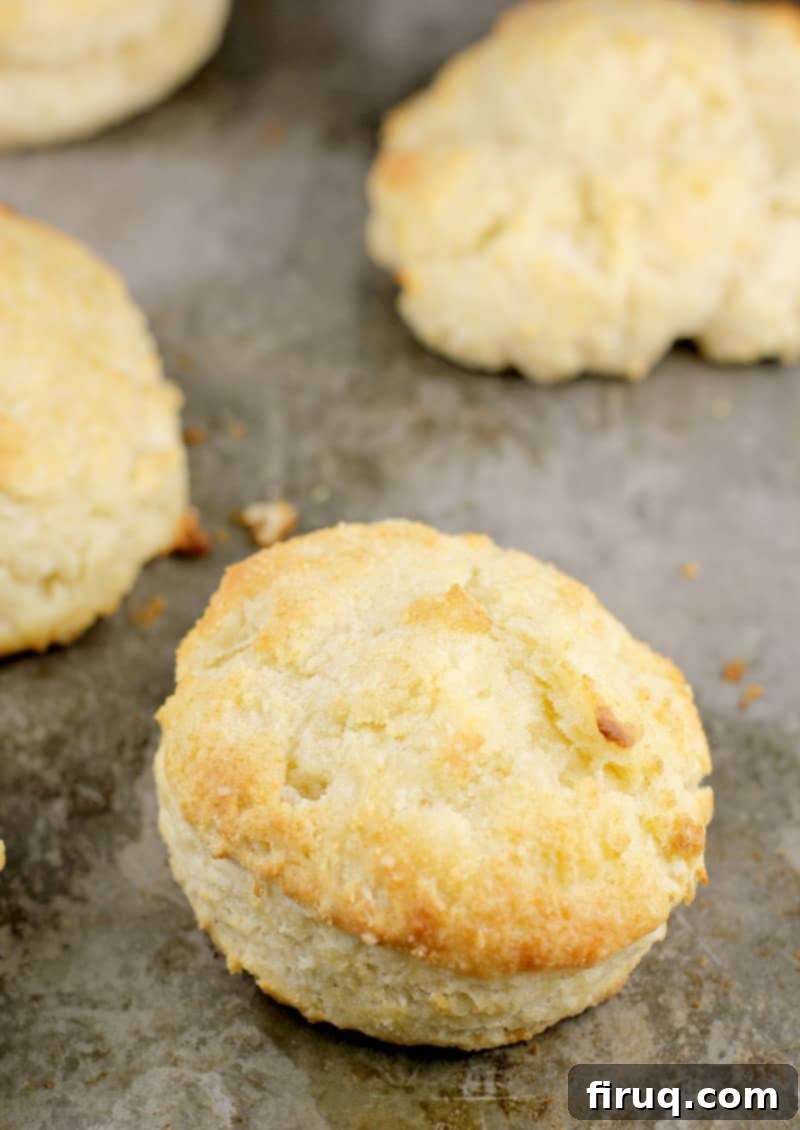
Delicious Ways to Enjoy Your Southern Biscuits
These classic Southern Buttermilk Biscuits are incredibly versatile and can be enjoyed in countless ways. Here are some popular serving suggestions to make the most of your freshly baked batch:
- **Classic with Butter and Jam:** The simplest and most beloved way to enjoy a biscuit. Slather it with good quality butter and your favorite fruit preserves, jelly, or honey.
- **Breakfast Sandwich Perfection:** Split open and fill with scrambled or fried eggs, crispy bacon or sausage, and a slice of cheese for a hearty morning meal.
- **Southern Comfort with Gravy:** A true Southern classic! Serve warm biscuits smothered in creamy sausage gravy for an indulgent breakfast or brunch.
- **Alongside Hearty Meals:** They make an excellent accompaniment to savory dishes like fried chicken, chili, stew, or pot roast, perfect for soaking up delicious sauces.
- **Sweet Treat:** For a simple dessert, split them, lightly toast if desired, and top with fresh berries and a dollop of whipped cream or a drizzle of maple syrup.
- **With Melted Cheese:** Immediately after baking, sprinkle with a little shredded cheddar or Parmesan cheese while they’re still hot, allowing it to melt into a gooey topping.
More Breakfast Ideas to Explore
If you loved making these Southern Buttermilk Biscuits, here are some other fantastic breakfast recipes to expand your culinary repertoire:
- Banana, Avocado, and Flax Muffins
- Flaky Yogurt Biscuits
- Low Carb Cheddar Bay Biscuits
- Sausage Balls
- Sunday Morning Buttermilk Waffles
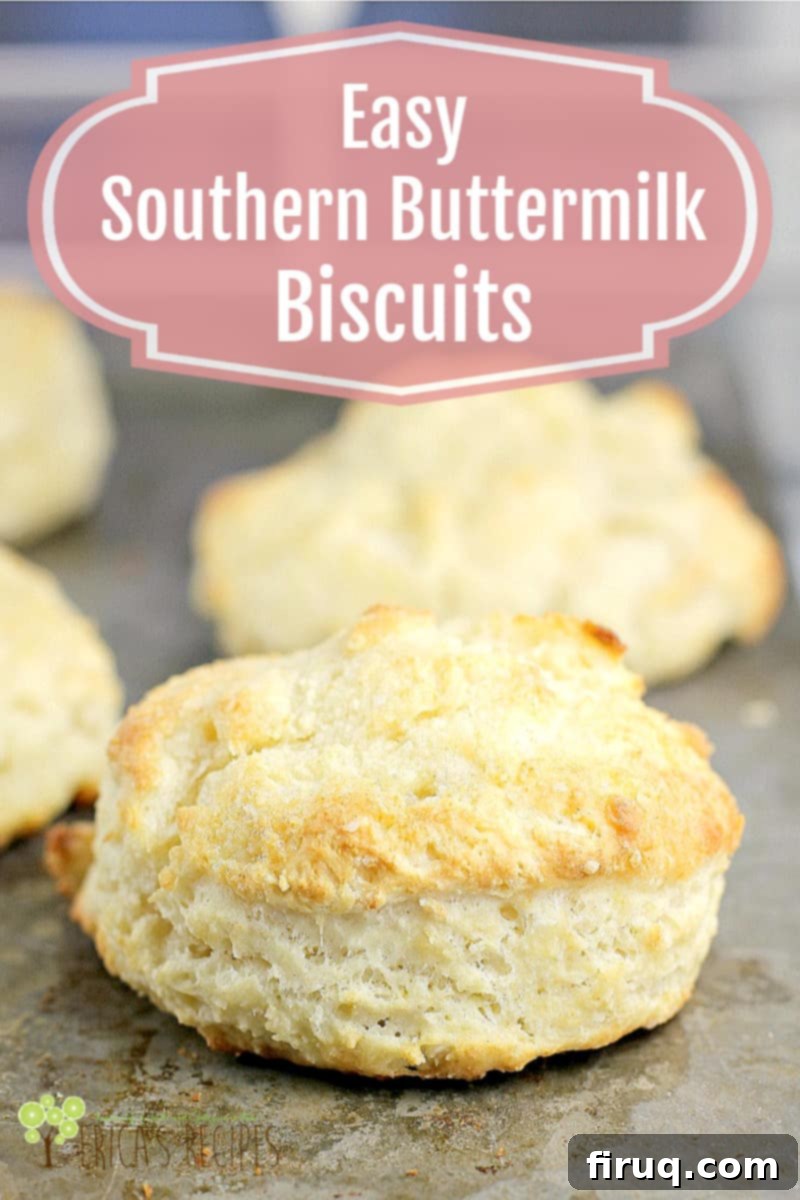
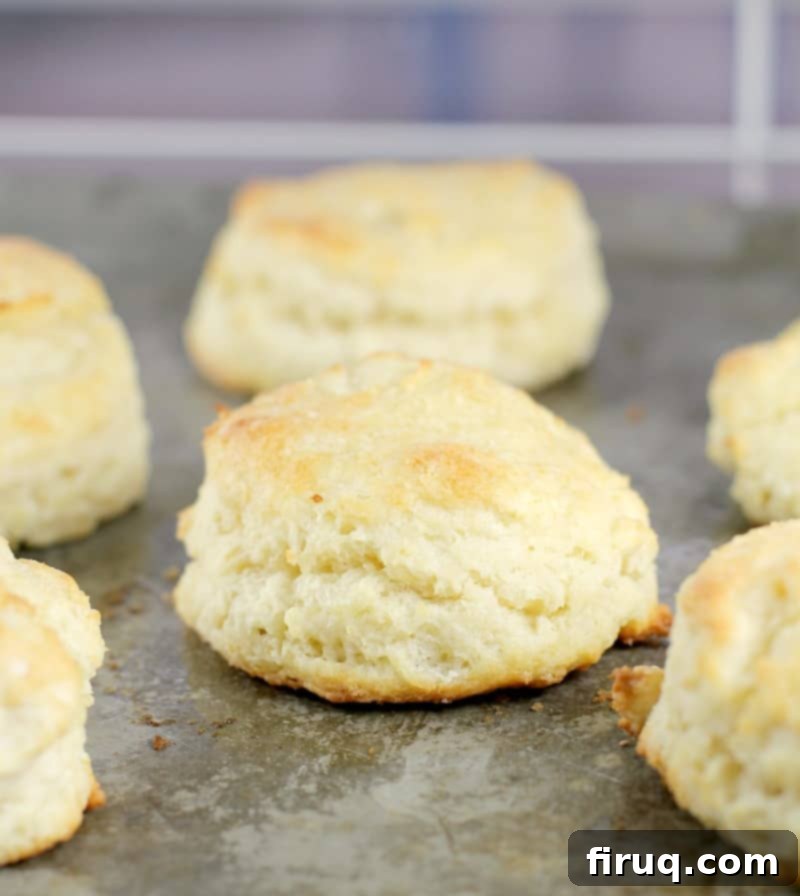
Southern Buttermilk Biscuits
Print
Pin
Rate
Equipment
-
biscuit cutter
-
food processor
Ingredients
- ½ cup unsalted cold butter diced
- 3 cups all-purpose flour
- 5 tsp baking powder
- 1-½ tsp kosher salt
- 1-½ cup buttermilk
- 1 Tbsp unsalted butter melted
Instructions
-
Preheat oven to 450F (232°C).
-
Combine the all-purpose flour, baking powder, kosher salt, and diced unsalted cold butter in a food processor. Pulse the mixture until it resembles coarse crumbs, with some pea-sized pieces of butter remaining. Alternatively, you can achieve this by hand in a large bowl using a pastry cutter.
-
Pour in 1-1/4 cups of buttermilk. Using a fork, stir the mixture gently just until the flour is moistened and the dough loosely comes together. If the dough appears too dry or crumbly, gradually add an additional ¼ cup of buttermilk, a tablespoon at a time, until the desired consistency is reached. Be careful not to overmix.
-
Turn the dough out onto a lightly floured surface. Gently roll or pat the dough to a thickness of approximately ¾-inch. Use a 2- or 3-inch biscuit cutter to cut out rounds. Remember to push the biscuit cutter straight down without twisting, as twisting can seal the edges and prevent proper rising. Place the cut biscuits onto a baking sheet.
-
Bake in the preheated oven at 450°F (232°C) for 10-14 minutes, or until the tops are golden brown. Remove the biscuits from the oven and immediately brush their tops with melted unsalted butter for an extra rich flavor and golden finish. This recipe typically yields 8-10 biscuits, depending on the size of your biscuit cutter.
Notes
Nutrition
~✿♥✿~
